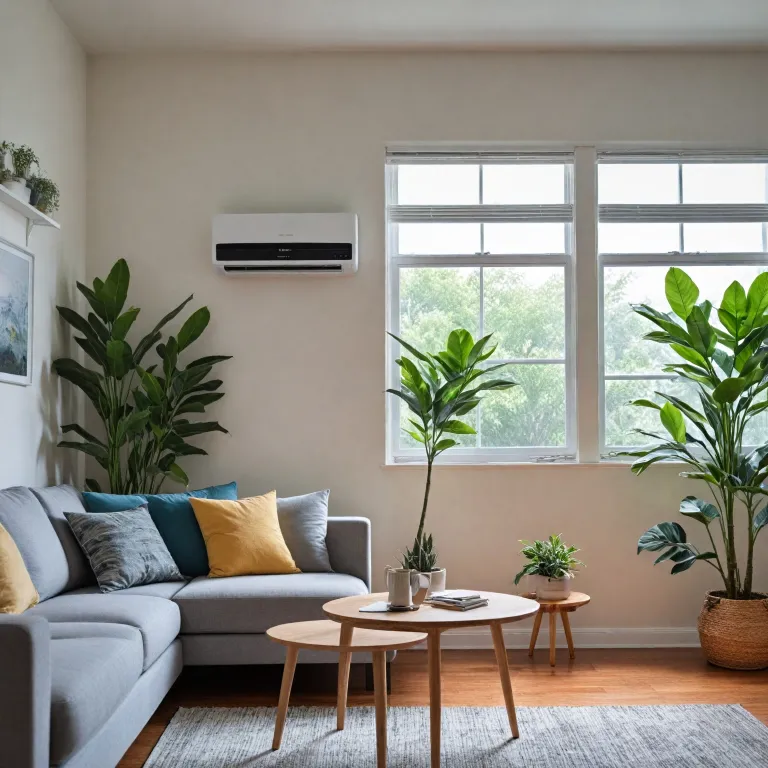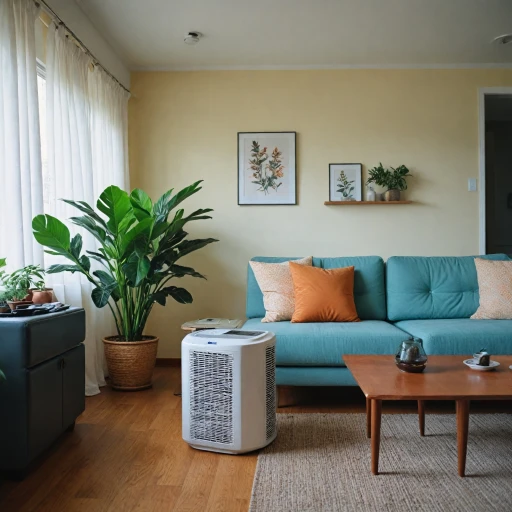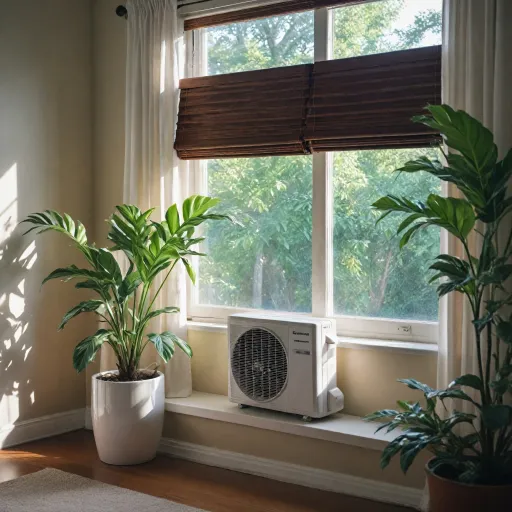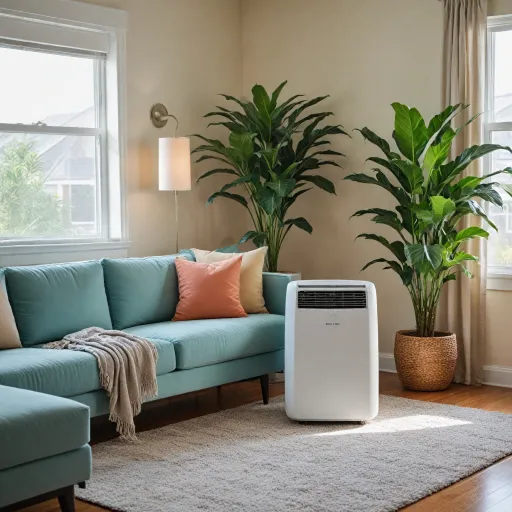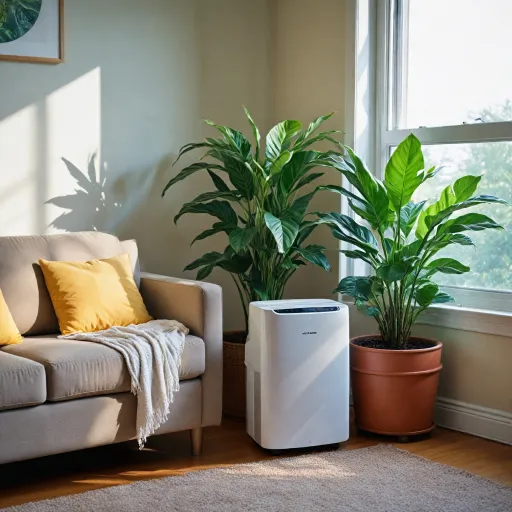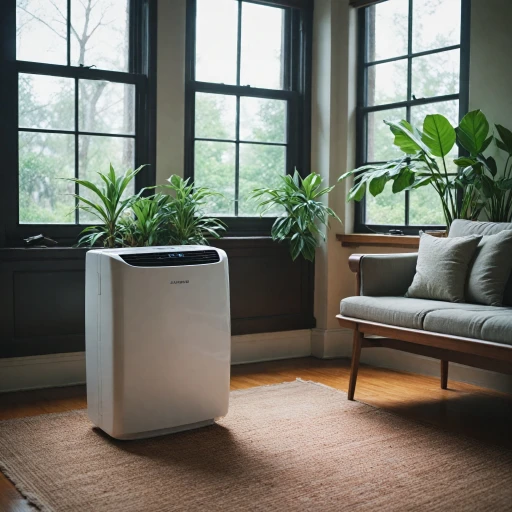
Understanding BTU and Its Importance
Decoding BTU: The Key to Efficient Cooling
When exploring the benefits of a 14,000 BTU window air conditioner, understanding BTU is crucial. BTU, or British Thermal Unit, is a measure of energy. In the context of air conditioners, it indicates the cooling capacity of the unit. The higher the BTU rating, the more powerful the air conditioner is at cooling larger spaces. This makes a 14,000 BTU model ideal for large rooms or spaces with a minimum window width that can accommodate such a unit.
Choosing the right BTU for your space ensures efficient cooling and energy use. An air conditioner with too low a BTU won't cool the room effectively, while one with too high a BTU will cycle on and off too frequently, wasting energy. This balance is essential for maintaining energy efficiency, which we'll explore further in the energy efficiency considerations section.
For those interested in understanding more about cooling capacities and how they relate to different air conditioning systems, understanding the benefits of a three-zone mini-split system can provide additional insights.
Whether you're considering a window air conditioner or a portable model, knowing the BTU is just the start. Factors like installation, maintenance, and troubleshooting common issues also play a significant role in your overall satisfaction with the unit. Stay tuned as we delve into these aspects in the following sections.
Comparing Window and Portable Air Conditioners
Evaluating the Differences Between Units
When deciding between a window air conditioner and a portable unit, several factors come into play that could influence your decision. Each model has unique features that cater to different needs and preferences. Here's an informative analysis to help you make a well-informed choice. One critical difference is the installation process. Window air conditioners typically require a suitable window opening with a minimum width to fit correctly. They generally need more effort and specific tools during installation but often provide a more permanent solution. On the other hand, portable air conditioners require almost no installation. You simply need to place the unit near a window with an included venting kit for the exhaust. Cooling Capacity is another key consideration. Both types come with a range of BTUs suitable for small or large rooms. While most window units can offer higher BTUs, allowing them to cool larger spaces efficiently, portable units offer the versatility to move from room to room as needed. Check the manufacturer's guide, such as those from geappliances, to ensure the model matches your room size. Energy Efficiency must also be evaluated, especially if you’re concerned about long-term energy consumption. Generally, window air conditioners tend to be more energy-efficient than their portable counterparts due to better sealing in the room. Keep an eye on Energy Star ratings to find units with efficient energy consumption. Another important point to consider is the maintenance and service involved. Window units can be more robust and often require less frequent cleaning compared to portable air conditioners, which might need regular emptying of collected water. Yet, portable models often provide ease of access for self-maintenance without requiring professional service visits. Fan Speeds and control options vary between the two options. Portable units generally offer more electronic controls and fan speed settings. This degree of control could be beneficial for tailoring the cooling air in diverse settings. For a comprehensive decision based on your cooling needs and room requirements, explore this detailed guide on choosing the right 10,000 BTU window air conditioner. This resource provides insights into optimizing value and efficiency.Installation Tips for Window Air Conditioners
Strategies for an Effective Window Air Conditioner Setup
Installing a window air conditioner may seem daunting, but with proper guidance, you can perform this task with ease. Let's delve into some key steps to ensure your unit provides optimal cooling in your space.- Check Window Specifications: Before purchase, verify the width of your window and confirm that your chosen model fits within the minimum window size requirements. This step ensures you select a unit that seamlessly fits while still allowing the window to close securely around it.
- Gather Necessary Tools and Materials: You’ll need tools like a screwdriver and materials such as weatherstripping. Some advanced models even integrate volt electronic components, which may require additional setup, so review the instruction manual or policy for specific recommendations from both the manufacturer and geappliances service center.
- Prepare the Window: Remove obstructions and clean the window area to ensure the best seal possible. Proper cleaning enhances the unit's efficiency and helps maintain long-term performance.
- Secure the Unit and Seal Gaps: Position the unit in the center of the window opening. Ensure a level installation to prevent water leaks and optimize performance. Use weatherstripping to seal any gaps around the unit, which helps with energy efficiency by reducing air leakage.
- Connect and Test the Unit: Once the window air conditioner is installed, connect it to a power source and test the different settings. Many units offer multiple fan speeds and modes suitable for large rooms. Make sure to follow the privacy and safety guidelines outlined in the user manual.
- Regular Maintenance Checks: To extend the longevity of the unit, perform regular maintenance checks, such as cleaning the filters and ensuring electronic components are functioning correctly. Contact customer service for assistance if you encounter persistent issues.
Energy Efficiency Considerations
Maximizing Energy Efficiency in Your Window Air Conditioner
When it comes to energy efficiency, a 14,000 BTU window air conditioner can be a smart choice for cooling large rooms. Understanding how to optimize its performance not only helps in reducing energy bills but also extends the lifespan of the unit. Here are some key considerations:
- Choose the Right Model: Selecting a unit with a high Energy Efficiency Ratio (EER) is crucial. The higher the EER, the more efficient the air conditioner is. Look for models that are Energy Star certified, as they meet strict energy efficiency guidelines.
- Proper Installation: Ensure that the window air conditioner fits snugly in the window opening. A minimum window width is often required, so check the specifications of your model. Proper installation prevents air leaks, which can significantly impact efficiency.
- Utilize Electronic Features: Many modern air conditioners come with electronic controls that allow you to set precise temperatures and fan speeds. Using these features can help maintain optimal cooling without overworking the unit.
- Regular Maintenance: Keeping the air filter clean and ensuring the unit is free from dust and debris can improve airflow and efficiency. Regular service checks by a professional can also help in identifying potential issues early.
- Smart Usage: Use the air conditioner only when necessary and consider using a programmable timer to manage cooling during peak hours. This not only saves energy but also reduces wear and tear on the unit.
By following these tips, you can ensure that your window air conditioner operates efficiently, providing effective cooling while keeping energy consumption in check. For more detailed guidance on installation and maintenance, refer to the earlier sections of this article.
Maintenance and Longevity
Preserving the Longevity and Efficiency of Your Window Air Conditioner
Maintaining your window air conditioner not only ensures optimal performance but also extends its lifespan. Regular upkeep can reduce the frequency of repairs and ultimately result in a more pleasant cooling experience.- Clean the Filters Regularly: Just like other room air conditioners, cleaning or replacing the filters is crucial. Over time, dust and debris accumulate, which can hinder air flow and force the unit to work harder. This simple task can significantly improve the efficiency of the conditioner and prevent over-exertion.
- Inspect the Vents and Coils: Ensure that the air vents are unobstructed to allow smooth air circulation. Periodically check the coils as they may gather dirt that can impede heat exchange. A solution of mild detergent and water can be used for delicate cleaning.
- Stay Aware of Leakages: Monitor the air conditioner for any signs of water leakage, as this can be an early warning of a blocked drainage system. Addressing such issues promptly can help maintain the unit's efficiency and avoid potential damage.
- Check the Seals: Verify that the unit is properly sealed in the window opening. Even minimal gaps can affect cooling efficiency and energy usage. Proper installation plays a crucial role in achieving the desired cooling levels, especially for large rooms.
- Schedule Professional Service: Regular professional inspections, perhaps annually, are recommended. Brands like GE Appliances advise connecting with their customer service for maintenance guidance. Experienced technicians can provide thorough assessments which may cover requirements such as the correct window width or minimum window opening needs.
- Utilize Electronic Window Settings: Many modern window air conditioners are equipped with electronic features. Understanding how to use these settings properly, including fan speeds and volt electronic controls, can impact consumption and comfort levels.
Troubleshooting Common Issues
Addressing Common Air Conditioner Challenges
When it comes to troubleshooting typical issues with your window air conditioner, it's essential to have a basic understanding of common problems and solutions. A unit that struggles to cool effectively, for instance, could be linked to incorrect BTU rating for the room, as discussed in relation to cooling capacity. Making sure the model aligns with your window opening and room air requirements is crucial. For electronic window air conditioners, such as those manufactured by leading brands like geappliances, having a solid grasp on troubleshooting basics can save you from incessant overheating, strange noises, or insufficient airflow. Issues may also arise if the installation hasn't adhered to the recommended requirements, affecting performance.Basic Troubleshooting Steps
- Check the Filters: Clogged filters can impede airflow and reduce efficiency. Regular cleaning or replacement is essential to maintain optimum performance.
- Inspect the Thermostat: Ensure your thermostat settings aren’t higher than desired which could prevent the conditioner from kicking on.
- Examine Room Insulation: A well-insulated room retains cooling air more effectively. Even if the air conditioner cools the room, poor insulation could make maintaining a consistent temperature challenging.
- Condensate Management: Excess water from condensation might result in leakage if your unit isn't managing it properly. Verify the installation angle and confirm the drainage system is unobstructed.
- Check the Unit's Fit: Ensure there’s no window width mismatch that could lead to improper sealing causing leakage.
